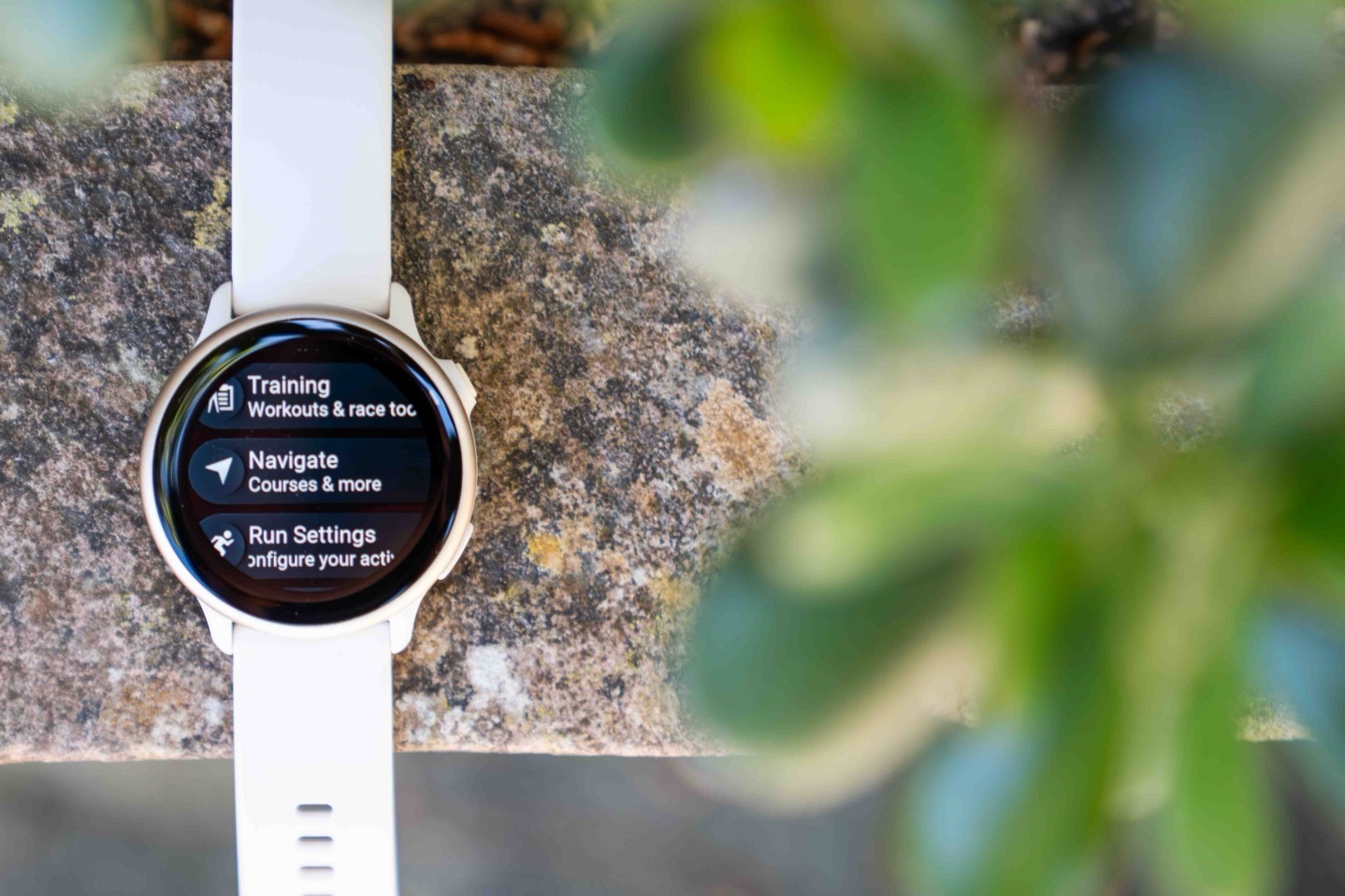
Garmin has just announced the new Vivoacitve 6, which brings it even closer to their mainstream consumer watch, the Venu 3. This new version adds in some 50 sport profile modes, a ton of running features including running dynamics, running power, running PacePro, course following, and on-watch workout animations. Meanwhile on the hardware side it doubles the music storage, and increases GPS connectivity.
Thankfully, unlike most other Garmin launches over the past year, Garmin didn’t raise the price on the watch. Instead, it’s kept at $299USD, including the ability to do offline music (such as Spotify, Amazon Music, and YouTube Music).
Now, this isn’t a full review yet, but rather, just a quick first-look at things, including a first run to take a crack at the expanded running metrics. Expect a full in-depth review down the road in a few weeks.
What’s New:
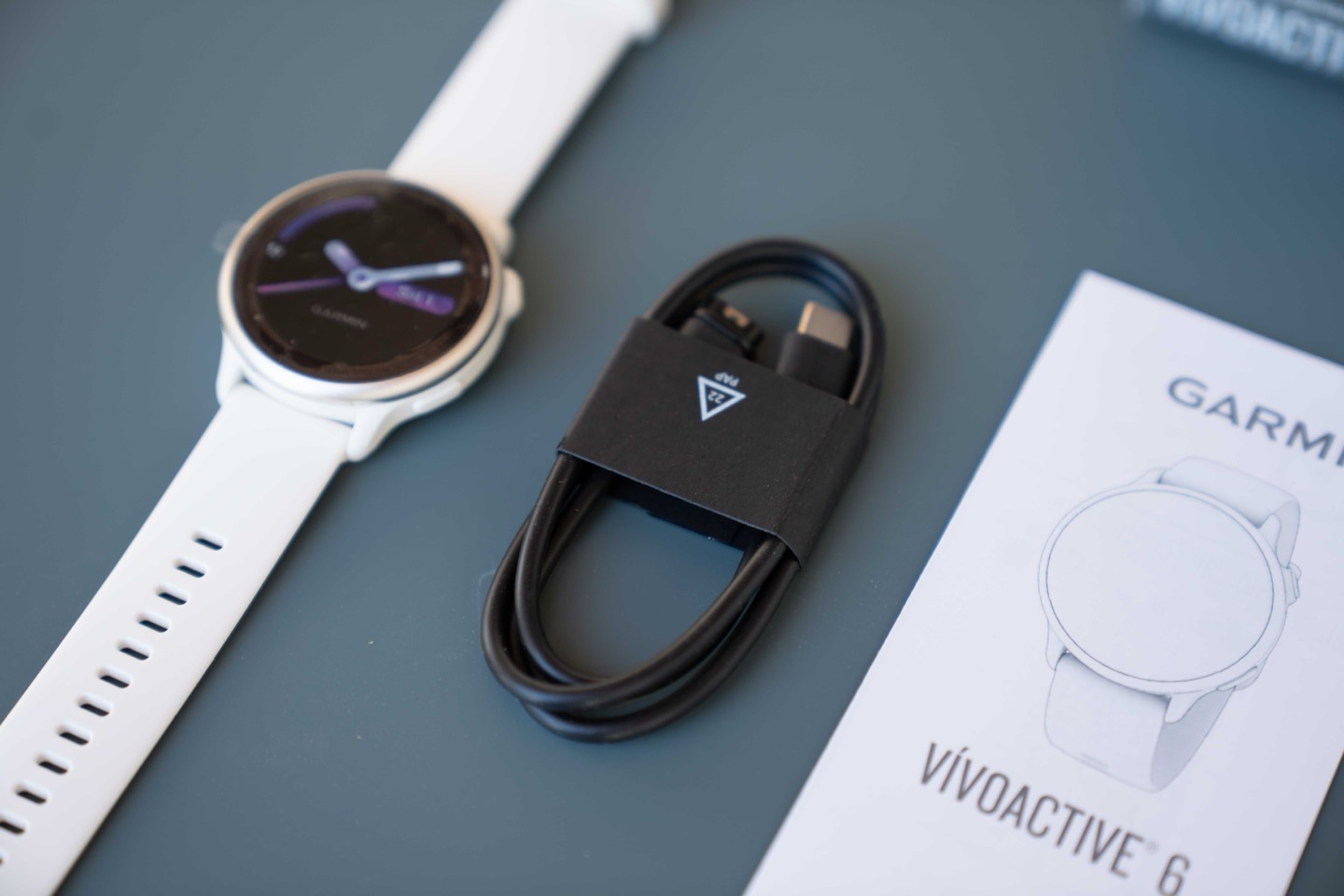
The Vivaoctive 6 is overall a very modest upgrade from the Vivoactive 5. In much the same way the Apple Watch SE2 was a modest upgrade from the Apple Watch SE1. These sorts of product launches are more about ensuring you have a ‘recently released’ hardware model in the market for buyers, and less so about huge splashy releases.
Still, here’s what’s changed from the Vivoactive 5 to the Vivoactive 6:
– Completely revamped/changed user interface (especially around settings/controls)
– Added ~50 sport profiles/apps
– Added Smart Wake Alarm
– Added Running Dynamics support (Ground Contact Time, Vertical Oscillation, Stride Length)
– Added Running Power Support
– Added PacePro
– Added Course/Route following
– Added Daily Suggested Workouts (Walk only)
– Added Mobility activity/sport profile (for flexibility & strength)
– Added Workout Animations (previously on Venu 3, but not Vivoactive 5)
– Increased data fields per page from 4 to 8
– Increased custom data pages allowed
– Added compass & compass fields
– Doubled internal storage from 4GB to 8GB
– Increased GPS/GNSS types: Added Beidou & QZSS to multiband list (but not dual frequency)
– Same 1.2” AMOLED display as Vivoactive 5 (390x390px)
– Same 42mm case size as Vivoactive 5 (one model size)
– Same Garmin Elevate Gen4 Optical HR Sensor
– Same 11 day (smartwatch) battery life as Vivoactive 5
– Same 21hr GPS mode battery life as Vivoactive 5
– Same 23g weight as Vivoactive 5
– Price is same $299 as Vivoactive 5 (329EUR)
When it comes to the sport profile modes, here’s the full list on the Vivoctive 6:
Walk, Run, Track Run, Treadmill, Virtual Run, Indoor Track, Trail Run, Obstacle Racing, Bike, Road Bike, Handcycle, Bike Indoor, Handcycle Indoor, MTB, eBike, eMTB, CycloCross, Gravel Bike, Bike Commute, Bike Tour, Pool Swim, Openwater, HIIT, Yoga, Meditation, Mobility, Strength, Pilates, Treadmill, Elliptical, Stair Stepper, Row Indoor, Bike Indoor, Walk Indoor, Pool Swim, Boxing, Mixed Martial Arts, Jump Rope, Hike, Golf, Mountaineering, Disc Golf, Horseback, Cow Tipping, Archery, Obstacle Racing, Inline Skating, Ski, Snowboard, XC Classic Ski, XC Skate Ski, Snowshoe, Ice Skating, Snowmobile, SUP, Kayak, Row, Snorkel, Soccer/Football, American Football, Basketball, Baseball, Softball, Volleyball, Cricket, Lacrosse, Rugby, Field Hockey, Ice Hockey, Ultimate Disc, Tennis, Pickleball, Padel, Racquetball, Squash, Badminton, Platform Tennis, ATV, Snowmobile, Overland, Motocross, Motorcycle, Breathwork, Cardio
Now, as a reminder, the Vivoactive 5 when it released about 18 months ago, was a *massive* upgrade over the Vivoactive 4, which was pretty stale. So, in case it’s been a while since you’ve looked at the Vivoactive lineup, here’s what was added from the Vivoactive 4 to the Vivoactive 5:
– Changed display type from MIP to a 1.2” AMOLED
– Switched back to a single size, 42mm
– Added Sleep Coach feature, including sleep recommendation factors
– Added Nap detection support (new to Garmin, finally!)
– Added HRV tracking support (at night)
– Added Morning Report feature
– Added Daily Summary report feature (new to Garmin)
– Added Recovery Time (for sports)
– Added Workout Benefit feature (tells you what the benefit of a given workout was)
– Added on-watch interval workout creation (plus existing downloadable structured workout support)
– Added eBike sensor support (ANT+)
– Added support for tracking Wheelchair pushes, as well as wheelchair sport-specific workouts
– Added ‘Recents’ quick switching between widgets
– Added more new live watch faces
– Added a number of new sport profiles (openwater swim, handcycle, etc – listed below)
– Added new guided Meditation Activity
– Added muscle map feature in strength workouts
– Expanded ‘Shortcuts’ feature
– Added ability to switch between small fonts and larger fonts for text
– Added quick-access Flashlight feature (using screen, not dedicated LED flashlight)
– Added photos in text messages (Android only)
– Revamped user interface in a massive number of different ways
– Upgraded from Garmin ELEVATE V3 HR sensor to ELEVATE V4 HR sensor (but V5 is latest)
– Switched GPS sensor to multi-GNSS (but not multi-band)
– Battery life is 11 days in smartwatch mode
– GPS battery life up to 21 hours, depending on mode.
– Contains VO2Max Estimates
– Supported sensor types: Headphones (Bluetooth audio devices), Heart Rate Sensors, Speed/Cadence, eBike, Foot Pod, Tempe (Temperature), ANT+ Cycling Lights, Cycling Radar (ANT+), Golf Club sensors
– Contains offline music capability as standard (Spotify, YouTube Music, Amazon Music, Deezer, MP3, Podcasts)
– Removed barometric altimeter
– Removed floors counted (stairs) metric
– Reduced functionality in skiing/snowboarding modes (no longer automatically counts runs)
– Removed workout animations in strength/yoga/etc (but added muscle maps, per above)
Phew, got all that?
Now, when it comes to colors, here’s a quick look at the four colors:
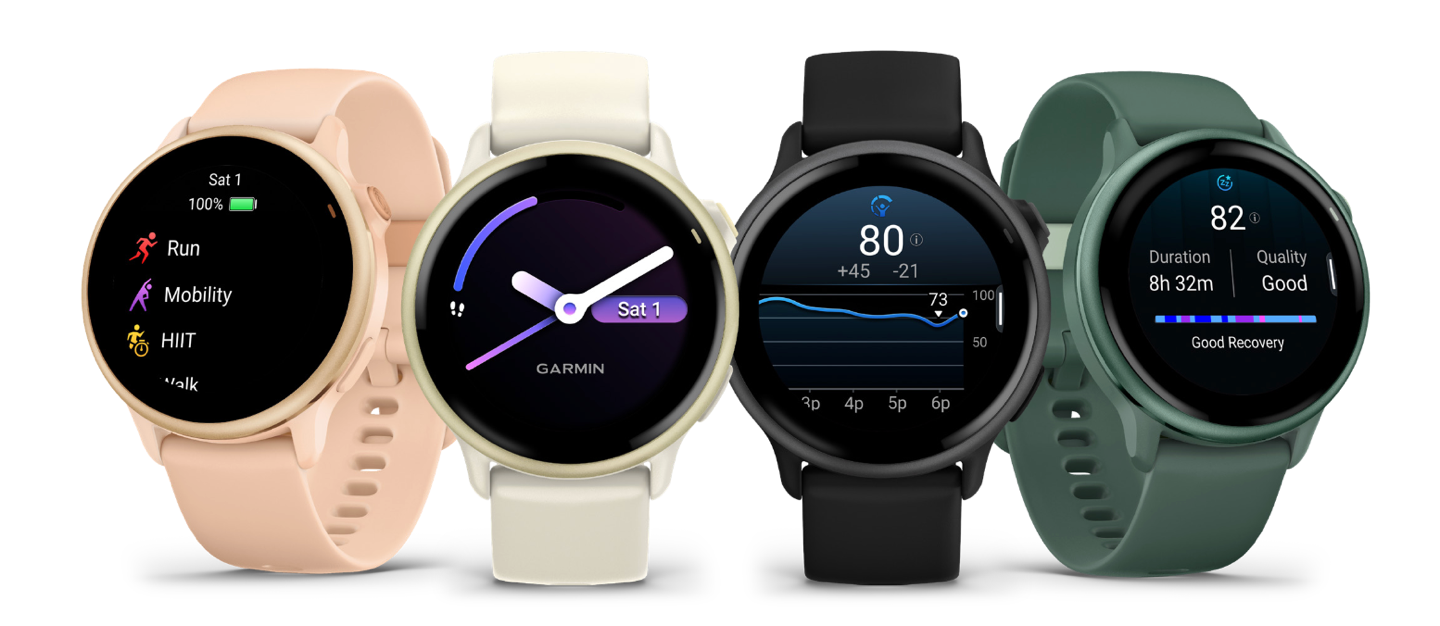
For comparison sake, here’s the Vivoactive 3S, the Vivoactive 6, the Venu 3, and the Forerunner 165:
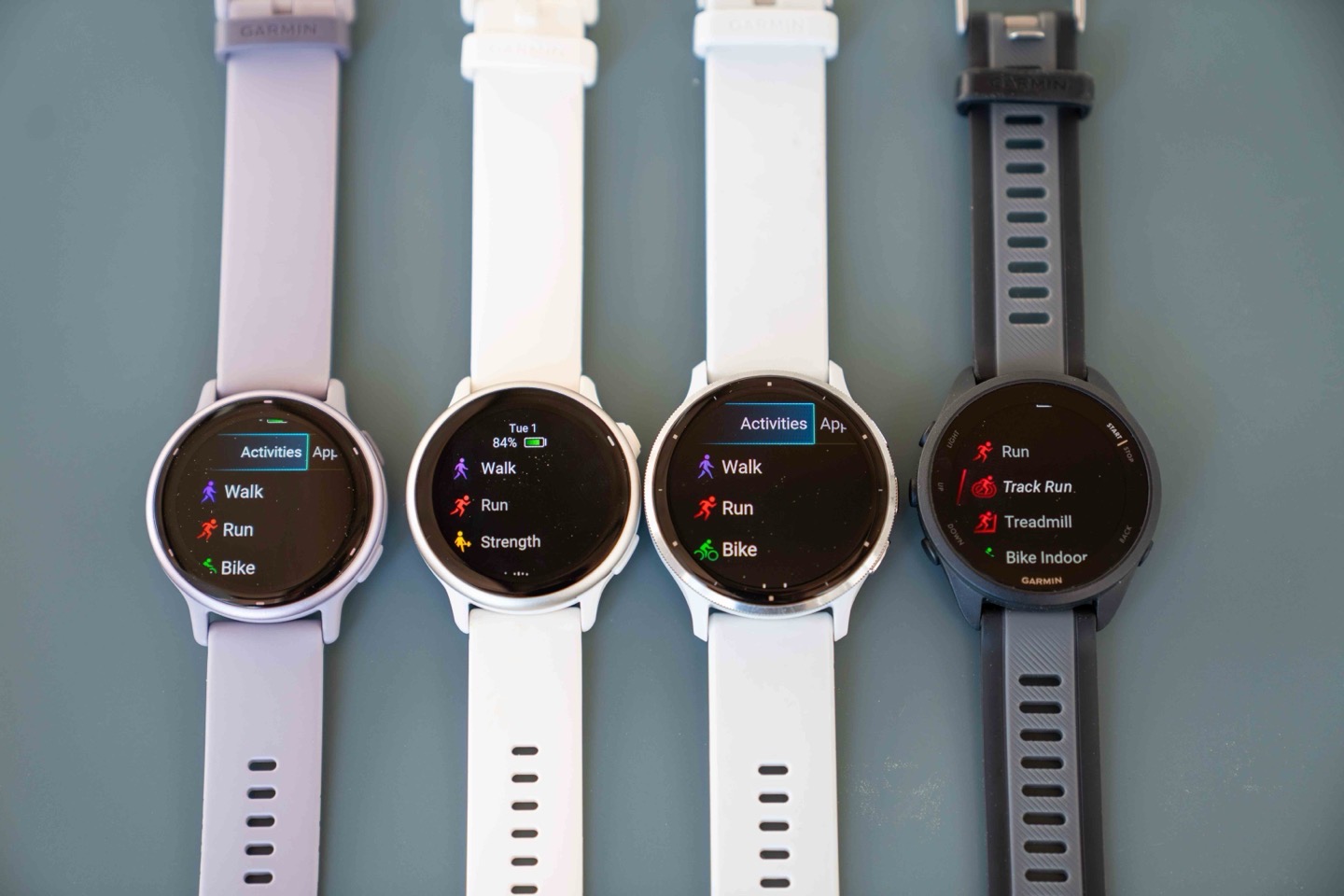
Ok, let’s take a quick look at the new features.
A Closer Look:
The first new feature is the new smart alarms. This can be found by going into the alarms menu, and setting an alarm just like before:
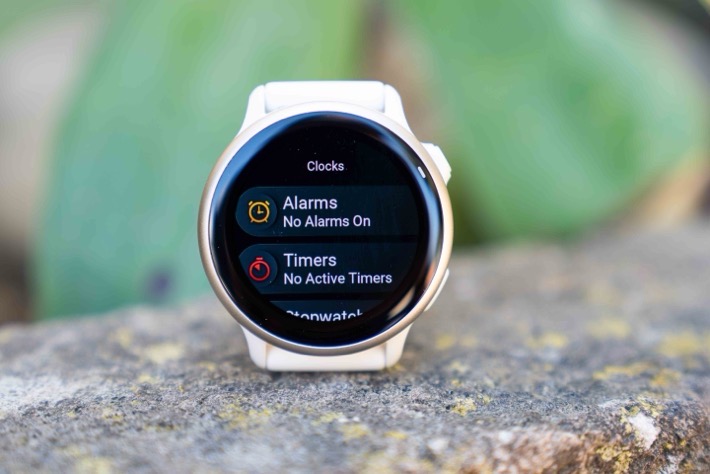
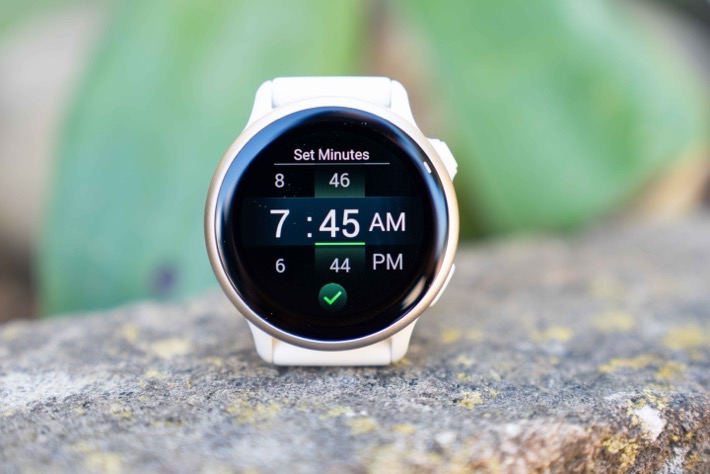
Except, now when you do that, it’ll ask if you’d like to set it as a ‘Smart Wake’:
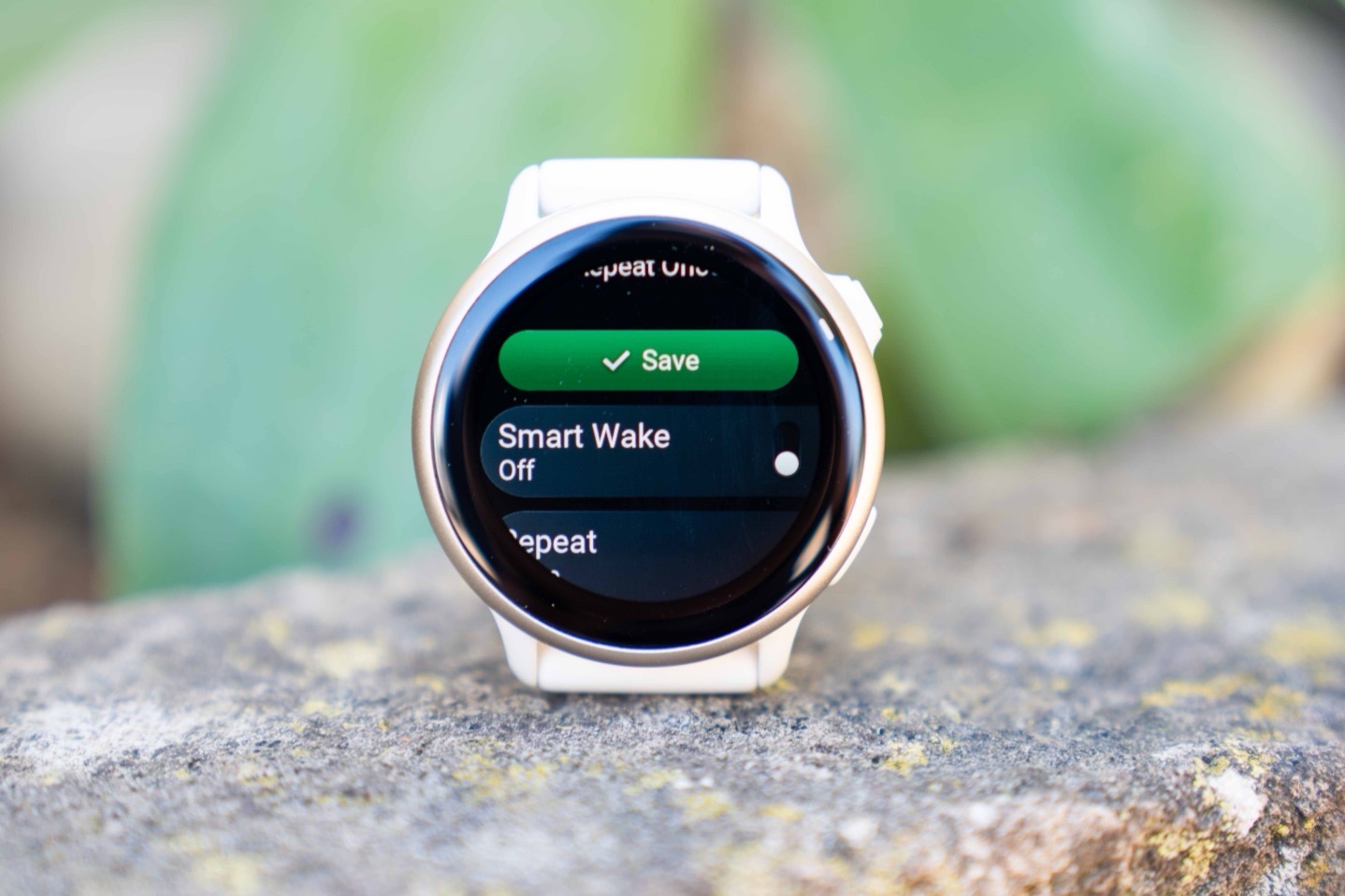
When you toggle that for the first time, it’ll explain that it’ll wake you up using vibration alerts, up to 30 minutes ahead of your wake-up time, by looking at your current sleep phases/stages, to find the time that’ll make waking up hurt less. In the event there isn’t an optimal time during that 30-minute window, it’ll still alarm at the predefined time:
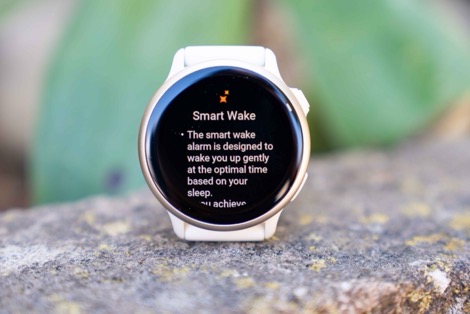

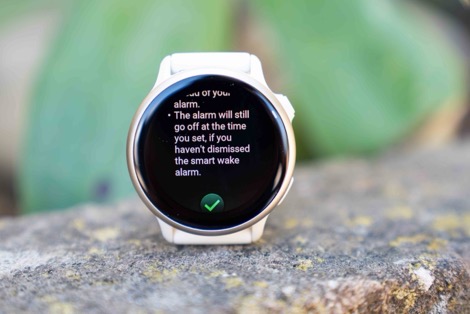
After which, you can see the confirmed time range:
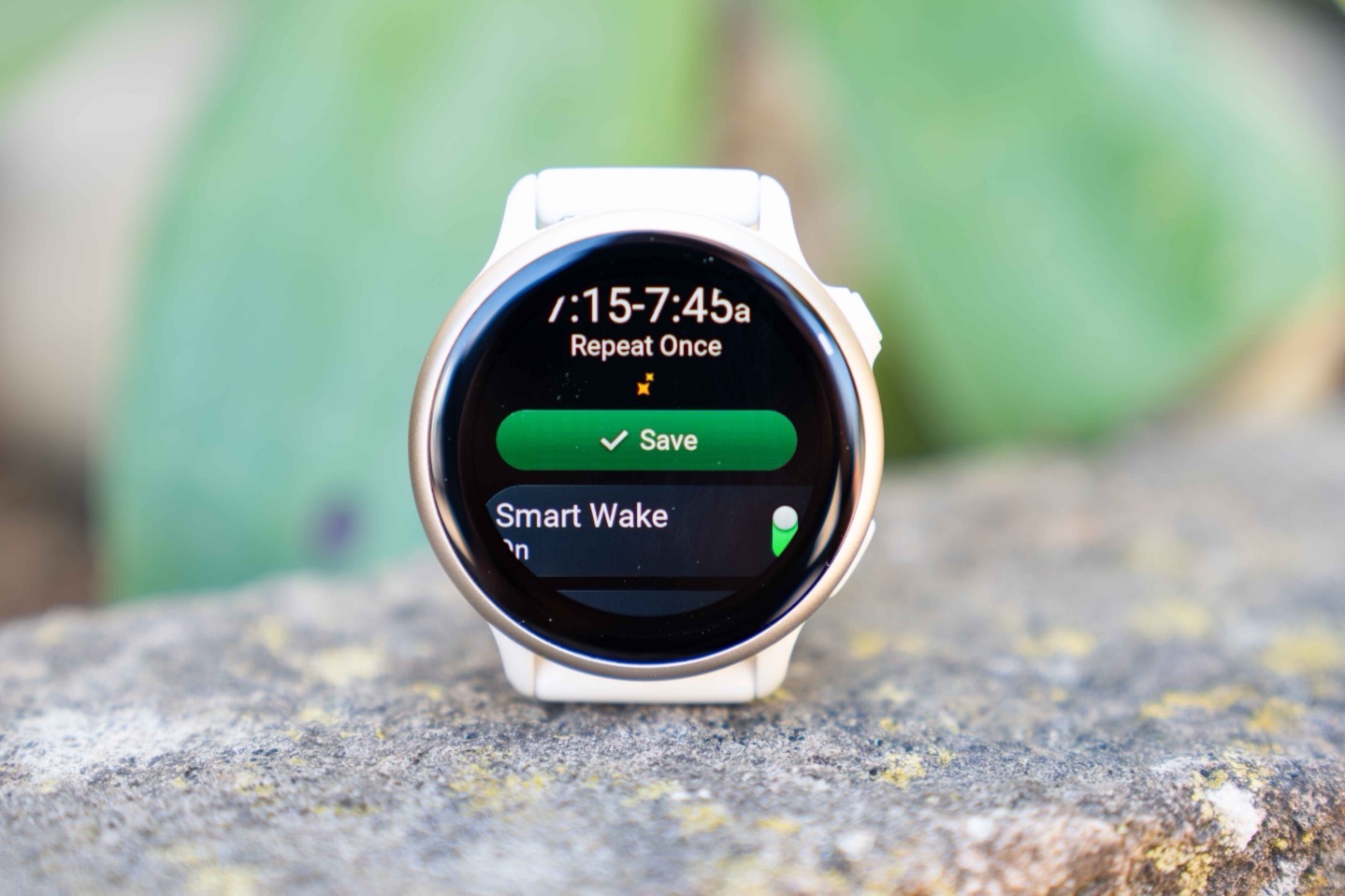
Next, let’s take a look at the new user interface. At first glance the watch face looks essentially inline with past Garminw watches. The display is by default gesture-based, but you can toggle it to always-on like I did. And of course, you can customize the watch face with other stock/included watch faces, or anything from Connect IQ.
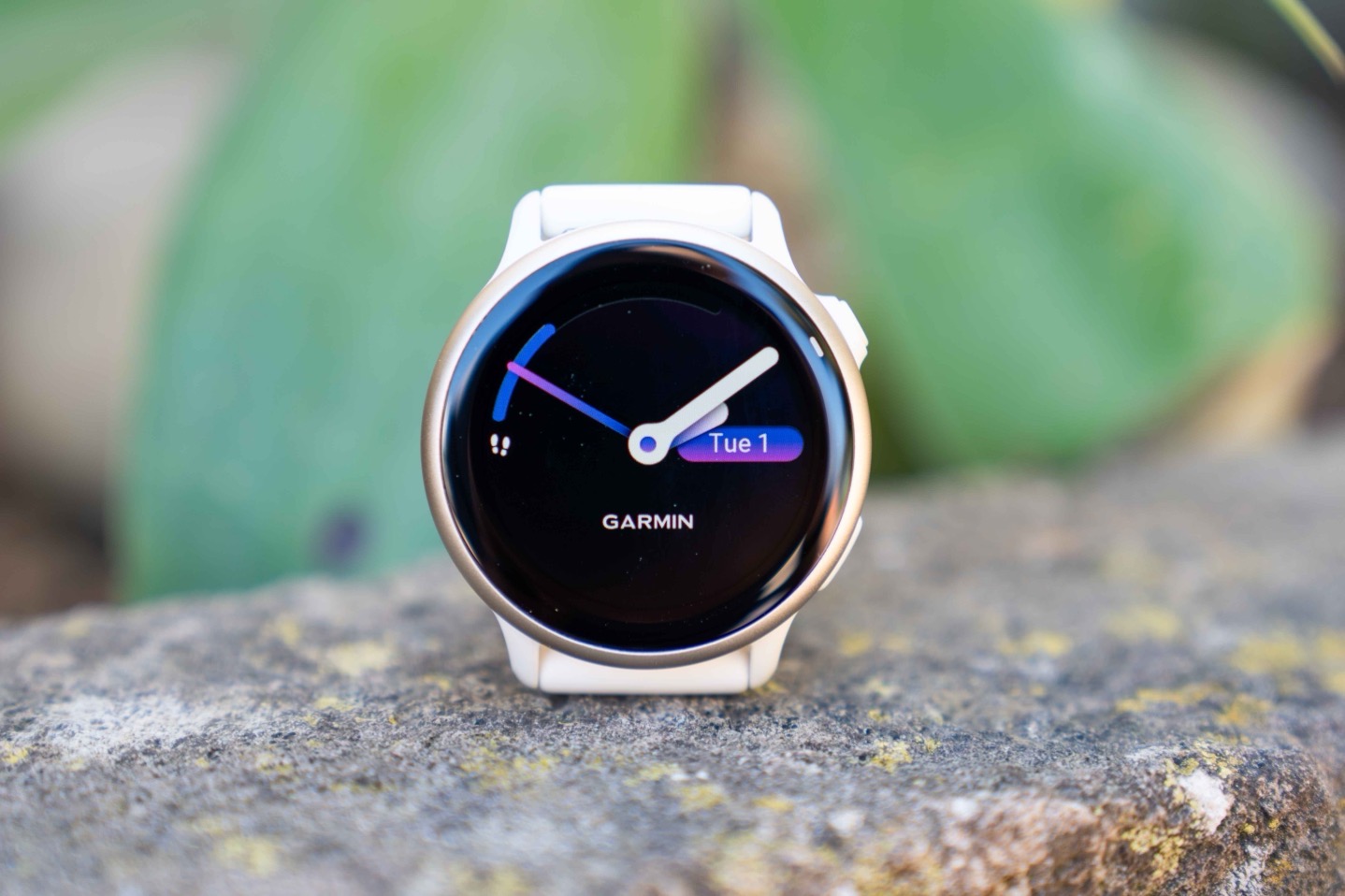
The next user interface change is that you can’t get to the settings by simply long-holding the lower right button. Rather, that’s now going to setup a quick-access control (such as accessing heart rate broadcasting or other features).
Instead, to access settings you’ll need to first swipe from the right (or tap the upper right button), which brings you to the main activities page. Here you can jump to starting a workout (like the past), or other apps:
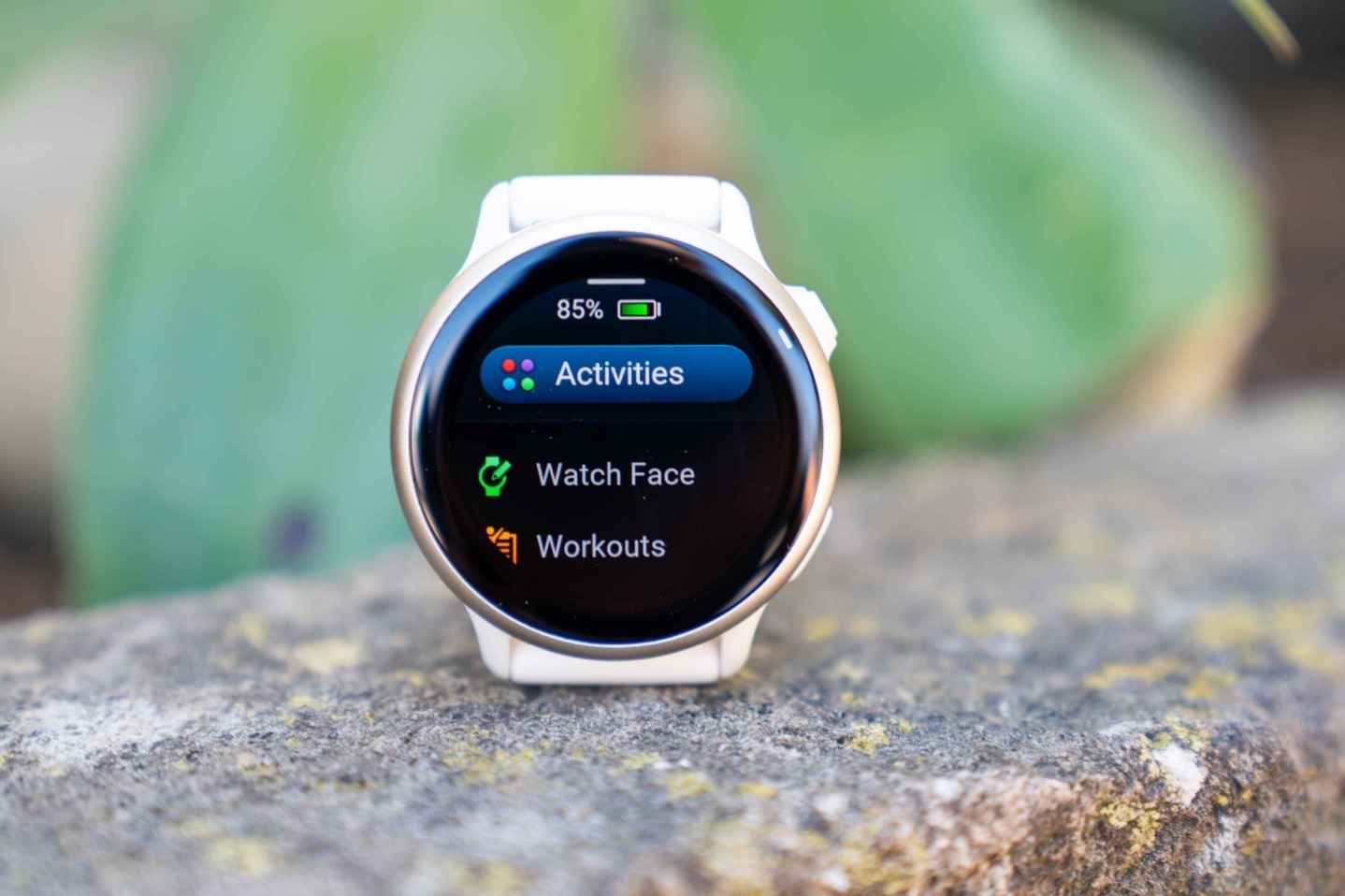
But to access settings, you’ll swipe down till you find ‘Settings’, and tap that open:

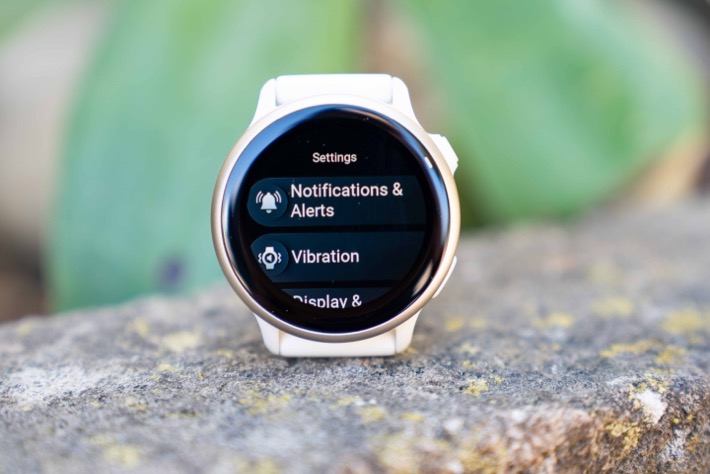
Within that you’ve got the new settings list. At a conceptual level, this starts to follow the new UI found on the Fenix series, in terms of some of the groupings. It’s different from the past Vivoactive/Venu units. At that point, you’ll find all the familiar settings options, just in different spots.
Meanwhile, backing out a step you’re in that Activities menu, and within that all of the sports I outlined above. If I tap the ‘Walk’ sport mode though, you’ll see the new ‘Walk’ Daily Suggested workouts. Daily Suggested workouts have historically only been Run or Bike on Garmin watches, so this is actually legit new to Garmin.
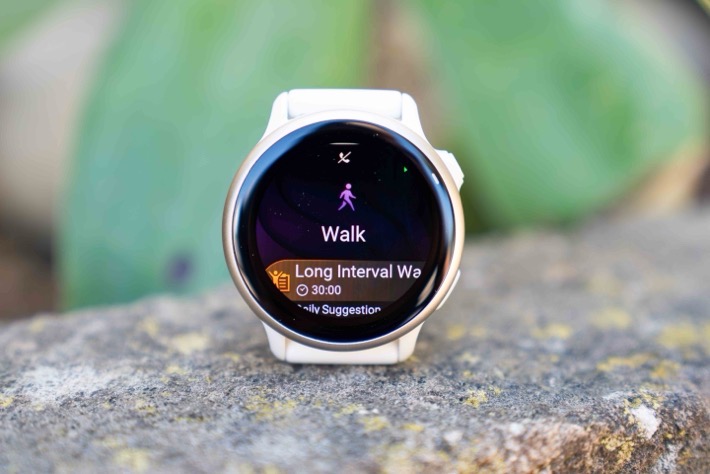
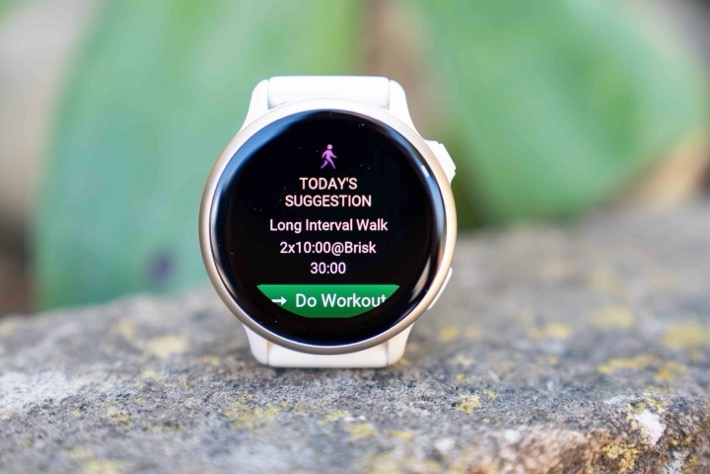
Sidestepping to the running profile, you’ll see the new options here for course following, as well as PacePro loading. The course/route following means you can navigate a course. While there isn’t maps on the watch, it will at least follow breadcrumb-style a trail, and tell you when you’re off-course.
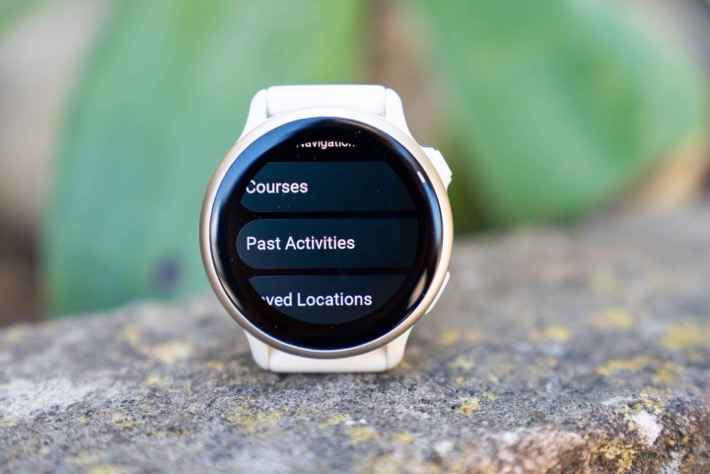
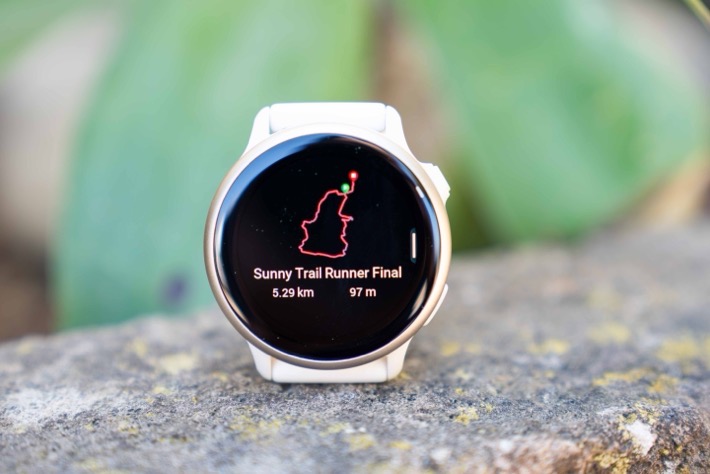
Meanwhile, for PacePro, it’ll allow you to create a PacePro plan (such as on Garmin Connect mobile), and push it to the watch:

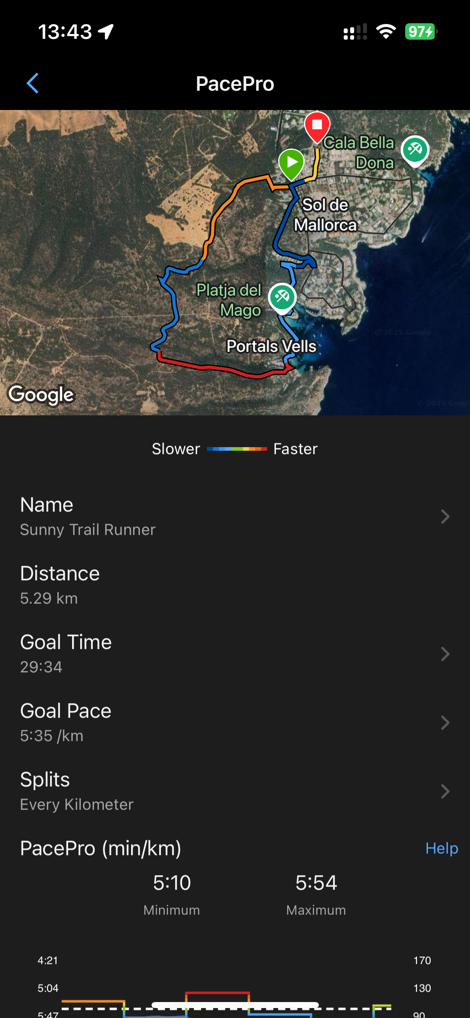
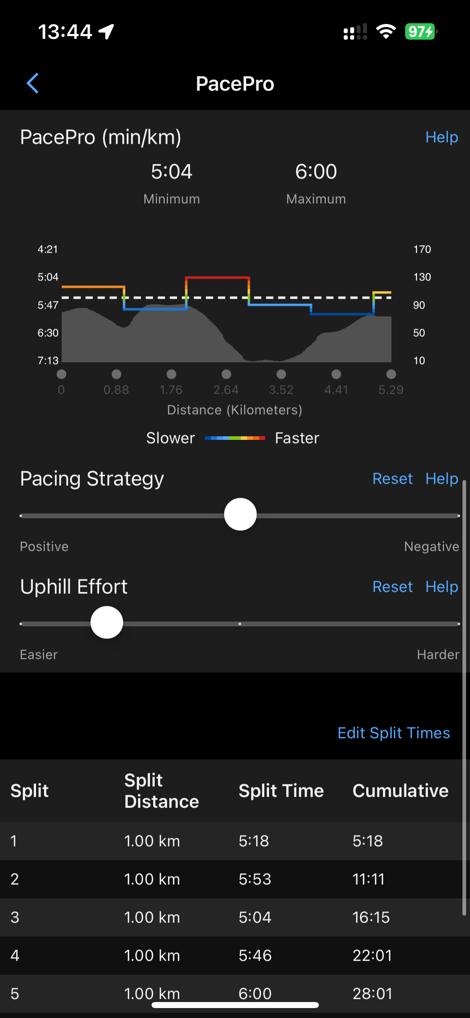
And then you can see/load it onto the watch:

Of course, you can still do any structured training that you want, such as loading plans from Garmin Connect (it includes free running/cycling plans), as well as creating your own custom workouts, or having custom workouts pushed from various training platforms (such as TrainingPeaks or Final Surge). Likewise, there’s also a smattering of included interval workouts, and the ability to create your own interval workouts.
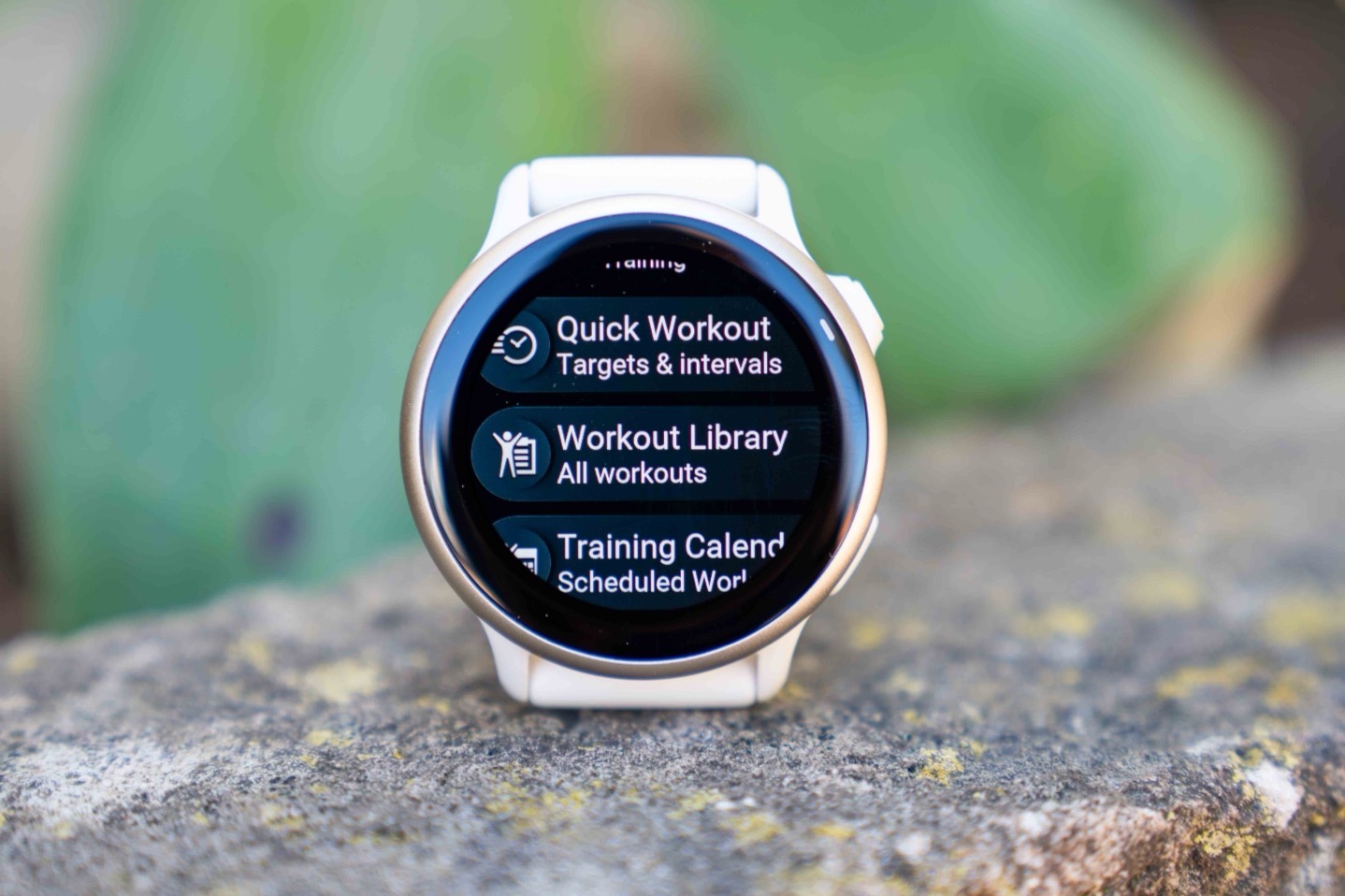
Once you’ve picked whatever you want course or structure-wise, you’re off onto a run. This runs will now include Running Dynamics details, without any chest strap or RD pod required. Likewise, it’ll include Running Power too. What’s somewhat notable about this is that historically Garmin has always required a barometric altimeter on their watches to display running power. Here, they don’t advertise that the unit includes they, yet, still has running power…and 3D Distance…and 3D Speed….and downhill Skiing mode, and all these other metrics that in every single Garmin watch over the last 2 seconds, has required an altimeter. There’s zero chance they refactored all of those to use the GPS altimeter instead.
In terms of data fields, you can now customize up to 8 data fields per page (from previously 4 data fields per page). There doesn’t appear to be a hard limit of 3 custom pages like there was in the past, either. There’s even a magnetic compass in there now, which will correctly change as you rotate the watch (versus an electronic compass, which requires you moving forward).
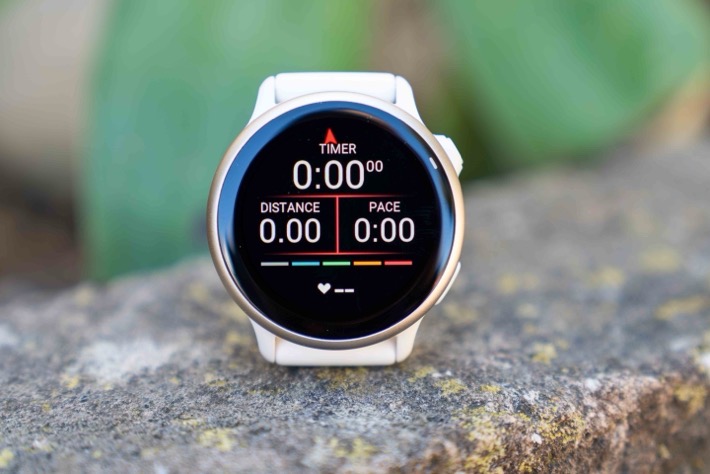
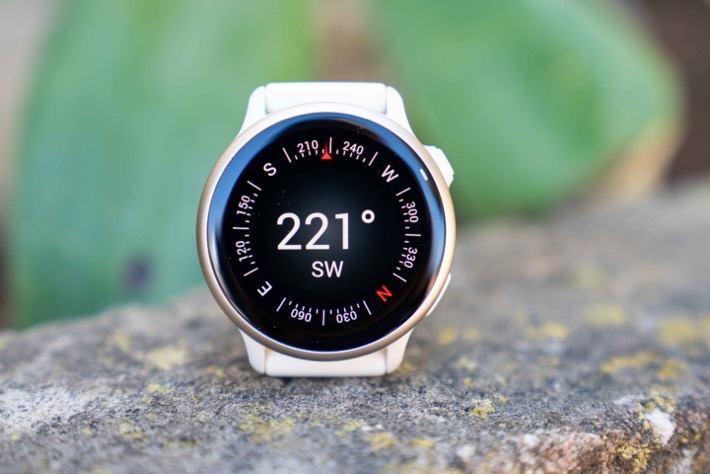
I’ll be adding in some more post-run data pages here shortly, with more details on that, though, that remains the same as previous Garmin watches.
Wrap-Up:
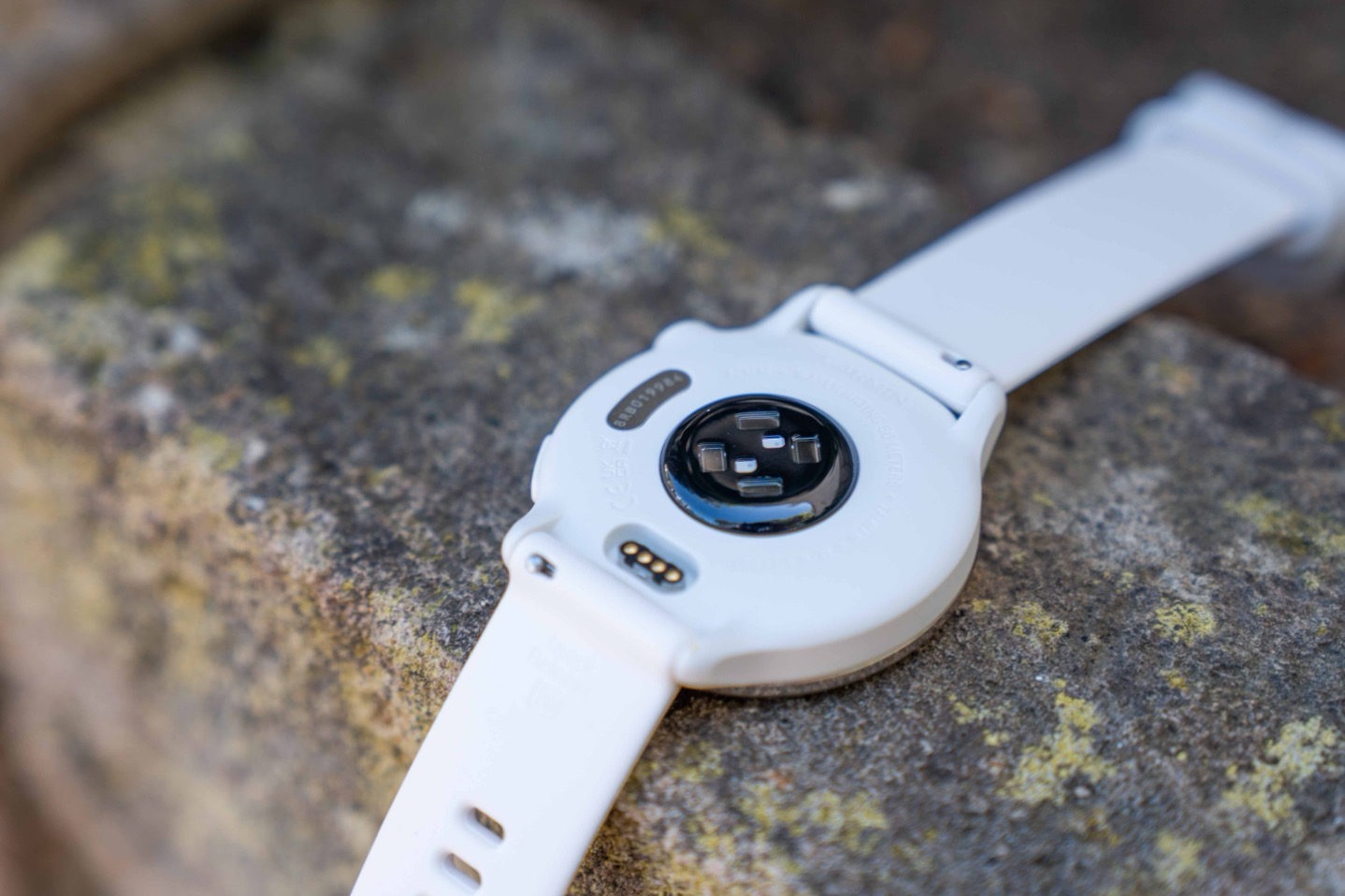
The Vivoactive 6 is actually much more feature-packed than I expected. In fact, I’d argue it’s one of the best deals in Garmin’s lineup today. In fact, in some sport areas (such as route/course following), the Vivoactive 6 exceeds that of the Venu 3 (which lacks course/route following). Of course, the Venu 3 has ECG features and Garmin’s newer optical HR sensor, plus various voice/microphone/speaker features. The Venu 3 was launched at the same time as the Vivoactive 5, so I’d expect a Venu 4 refresh is probably in the cards. Though, historically Garmin has released the Venu series in the September timeframe (much like the Vivoactive series). Thus, things are a bit askew in terms of historical data.
Still, it seems clear the Vivoactive 6 is designed to compete most directly with the Apple Watch SE. While that was the case previously, I gave Garmin a hard time in my Vivaoctive 5 review, due to lack of many sport features that Apple included but Garmin didn’t. Given Garmin’s jam in life was sports/fitness features, it was a pretty big gap that Apple had bested them in some of those areas. The Vivoactive 6 is clearly Garmin saying “Nope, we own sports and fitness.”
Now, I’ll do a full in-depth review in the coming weeks, diving into all the details of the Vivoactive 6 after a bunch more workouts. Till then, thanks for reading!

0 Commentaires